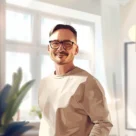The Western U.S. stands at a critical juncture as it confronts the escalating impacts of climate change, demographic expansion, and shifting economic demands. These forces threaten the delicate equilibrium of sustainable practices and agricultural output that the region has long maintained. The outcome of this struggle won’t be confined to local borders but will ripple across national and international food supply chains and conservation initiatives. The Western states’ response to this confluence of challenges is crucial and will have lasting implications not only for the American West but for global food security and ecological stewardship in the coming years. Their ability to harmonize environmental sustainability with agricultural efficiency is vital, given its role in feeding a growing population while preserving unique ecosystems.
Water Scarcity and Agricultural Adaptation
Water is the lifeblood of Western agriculture, yet it’s also the most prominent point of vulnerability. A harsh reality confronts this region: persistent droughts and diminishing snowpacks are threatening water availability for irrigation. The anticipated increase in water scarcity calls for innovative strategies to balance agricultural needs with ecological and urban demands. This adaptation will not be painless; it requires operational changes, technological advancements, and a collective shift in water management philosophies.The future of irrigated agriculture hangs in the balance, catalyzing a race to develop drought-resistant crops and advance irrigation techniques that conserve water without compromising yield. However, these developments must be coupled with comprehensive policies that support sustainable practices. Farmers and policymakers alike grapple with difficult choices, where the allocation of limited water resources reflects broader societal values and priorities.
Environmental Regulations and Their Impact
Another facet of preparedness hinges on environmental regulations and their enforcement. The implications of laws like the Clean Water Act are far-reaching, dictating the health of waterways and the responsibilities of those who use them. Striking the right balance between regulatory measures and agricultural productivity is a complex dance, particularly with the push towards more natural farming methods and reduced reliance on chemical insecticides and fertilizers.As the West steers towards an environmentally conscious future, it faces the challenge of integrating new practices with traditional agricultural models. This transition is fraught with legal and economic implications, where even well-intentioned regulations can have unintended consequences on the viability of farming operations. Astute legal frameworks and policies are needed to ensure that environmental stewardship becomes a shared responsibility rather than a cumbersome obligation.
Meeting the Challenges with Innovation
Agriculture in the West is pivoting toward sustainability, driven by necessity and bolstered by innovative practices. Initiatives focused on soil health and precision agriculture signal a shift towards farming systems that balance productivity with environmental resilience. This evolution also requires policy reform; the upcoming 2024 Farm Bill could be pivotal in aligning agricultural policy with the needs of modern Western farming.The region’s readiness to tackle agri-environmental challenges hinges on its ability to adapt and build resilience. By leveraging scientific advancements, enacting informed policies, and committing to cooperative stewardship, the West is forging a path that seeks to harmonize agricultural productivity with ecological well-being. As technological, legal, and cultural landscapes transform, Western agriculture is embarking on a sustainability journey that is as necessary as it is commendable.









